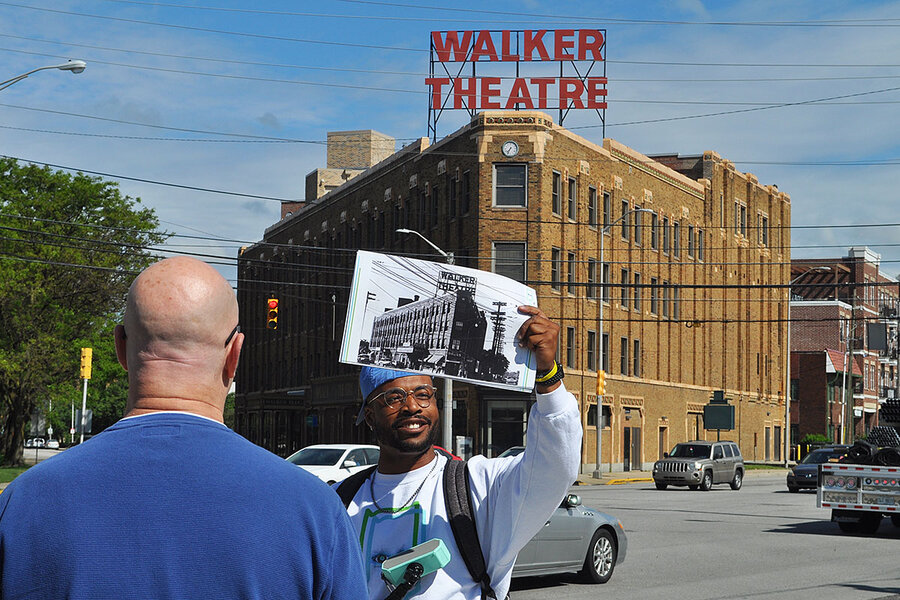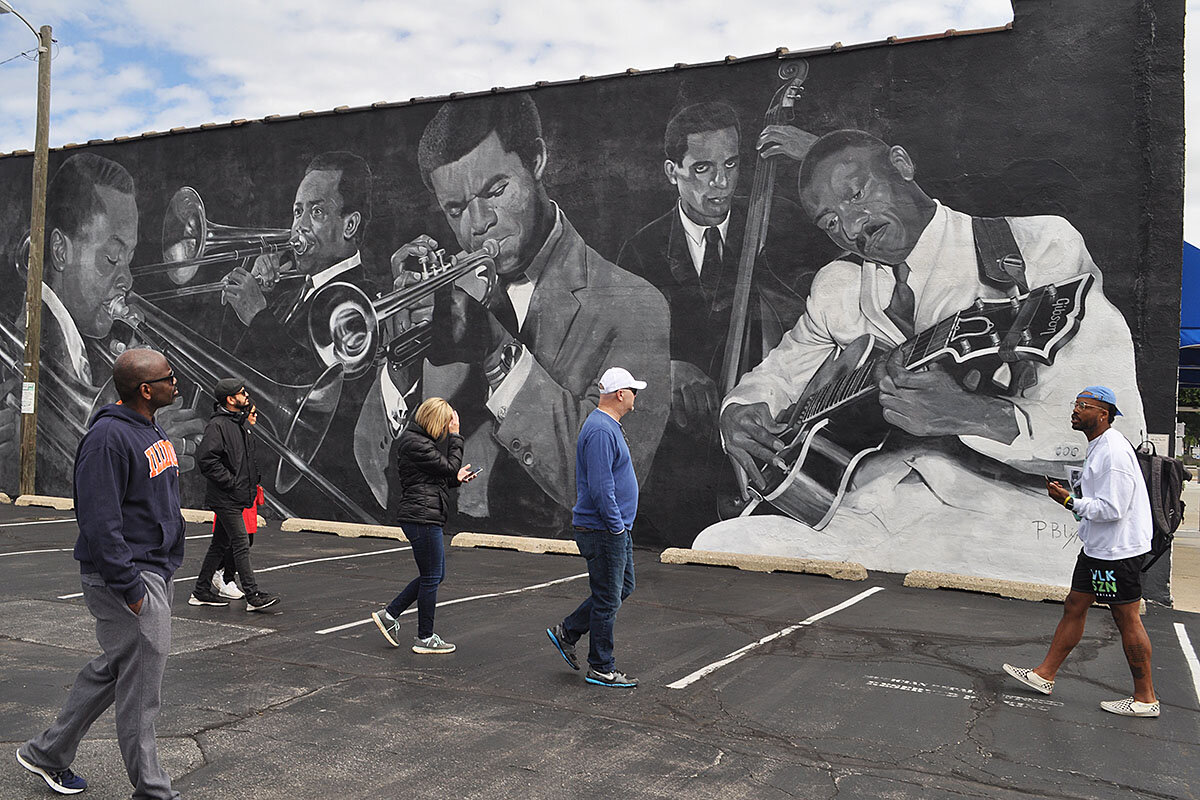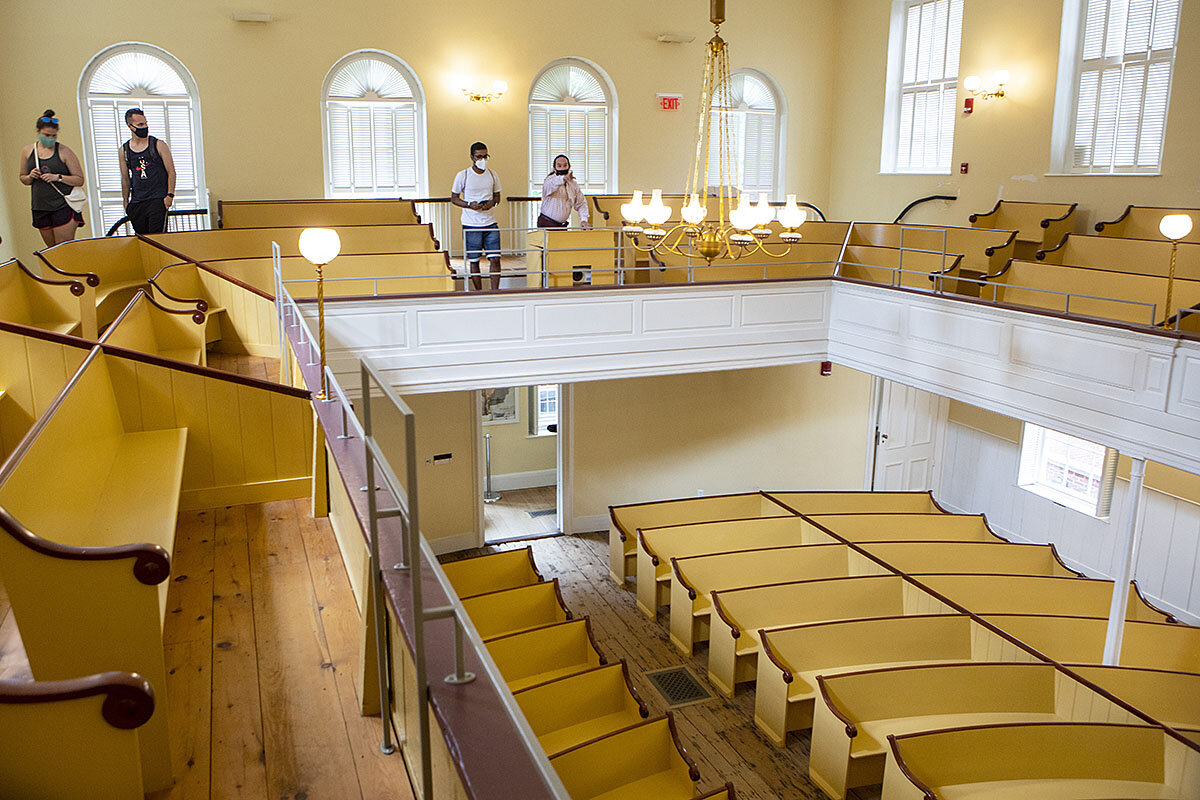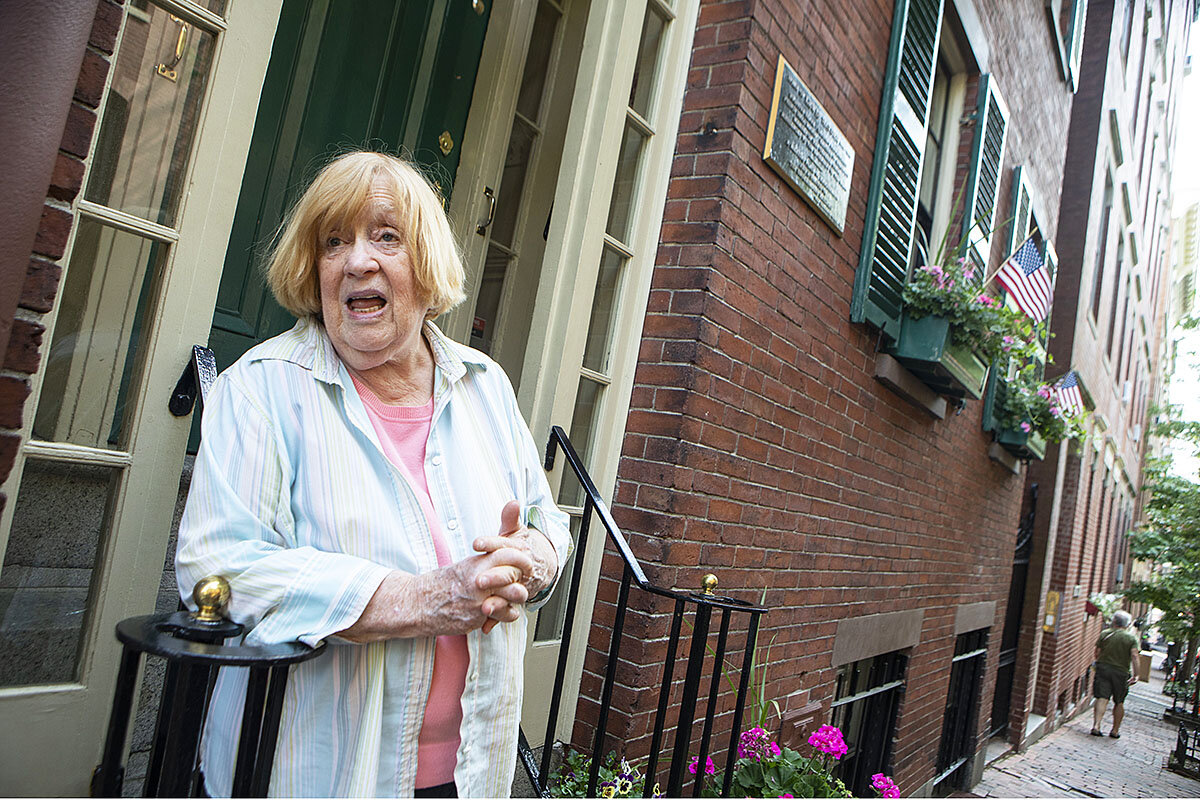On these Black history walking tours, bring your imagination
Loading...
| Indianapolis
Sampson Levingston has always been a history buff. And he’s always loved his home state of Indiana. For a long time, though, he struggled to see how someone like him – a young Black man – fit into Indiana’s history.
But when protests last summer ignited national conversations on race and racism in America, Mr. Levingston reckoned there were local stories to be told. With time on his hands – he was unemployed due to the pandemic – he decided to start a walking tour on Indianapolis Black history.
Almost a year later, on an unseasonably cold Memorial Day weekend that was less than ideal for barbecuing, but perfect for a brisk walk around Indianapolis, he gathers up the participants for his 96th tour. Nine people, a multiracial mix of locals and out-of-town visitors, huddle outside the Urban League of Indianapolis. Mr. Levingston greets them all with a smile. He carries a bundle of historic photos and a portable speaker so he can play the music of local jazz legends during the two-hour walk.
Why We Wrote This
Growing interest in historic urban sites of Black history is a corrective to their displacement by urban redevelopment. These tours also highlight the resilience of Black communities in the past.
Though the tours are relatively new, they’re the natural culmination of Mr. Levingston’s journey as an amateur historian. “I’ve been collecting this history and this knowledge about where I fit in in Indiana and our history for three or four years,” Mr. Levingston tells the Monitor.
His tour is one of many focusing on Black history that have cropped up across the country, taking Black history out of books, archives, and oral histories, and putting it into real life – engaging in what scholars call “public history.” They point out what’s gone, but also highlight what remains, whether through historic preservation or sheer perseverance.
Perhaps the starkest example is Tulsa’s Greenwood district, where a murderous white mob in 1921 razed a thriving community known as Black Wall Street. Walking tours of the neighborhood have since sprung up. Last week President Joe Biden visited the site to mark the centenary and toured an exhibit showing before and after images of the 30-block district. Referring to the long-suppressed massacre, he told a crowd: “Just because history is silent, it does not mean that it did not take place.”
During the early days of the pandemic, Mr. Levingston found himself cooped up inside, in need of an outlet – and not just because of boredom. “Ahmaud Arbery – his killing in Georgia, that really struck a chord with me, because I like going outside and exploring. That’s all he was doing. … So I was like, ‘I’ve got to get back outside,’” he recalls.
He dubbed his tours Walk & Talks – he prefers to spark a conversation than just spout facts – and leading them has become his full-time job.
The paradox of Black history walking tours is that many of the sites being highlighted no longer exist. Those that have remained are sometimes hiding in plain sight.
Approaching downtown, Mr. Levingston leads his group to the 400 block of Indiana Avenue, where dozens of the businesses, shops, and clubs that once made up a thriving Black business community were demolished during urban renewal projects starting in the mid-20th century. He holds up an old photo of a row of businesses, but initially there’s confusion among the group – looking around, remnants of those buildings are nowhere to be seen. Mr. Levingston explains that they once stood behind him, in the space occupied now by a mostly empty parking lot.
By joining such tours, curious Americans can not only learn about Black history in their cities, but also put tangible context to historically Black neighborhoods that have changed – sometimes naturally, sometimes forcibly – over the years.
“What [having Black history walking tours] does is it shows the positive resilience of those communities,” says Christine Anderson, an associate history professor and co-director of the Public History Program at Xavier University in Cincinnati. “Right now we are rightly talking about the carceral state. … We’re talking about violence, we’re talking about inequality. All these things have been there. But also, these communities were building schools and churches, and they had fraternal societies that met.”
Taking history out of the classroom, Dr. Anderson says, can “give people back their history. Especially when you’re talking about underserved or marginalized communities.”
Welcome to Congo Square
Raina Yancey grew up surrounded by history – her mother was a park ranger at Independence National Historical Park, in Philadelphia, home to the Liberty Bell and Independence Hall. And yet, she still felt there were more stories to be told. In 2019, she started The Black Journey, a walking tour focusing on the city’s Black history.
Ms. Yancey’s tours take in well-known historical sites, like the President’s House – where George Washington and John Adams lived and worked before the presidency moved to the White House – but also places like Washington Square, a popular meeting place and burial ground for the city’s enslaved and free Black community in the 18th and 19th centuries.
“Most people don’t know this history. When they’re sitting and having a picnic, they’re actually maybe sitting on top of an ancestor who’s buried there,” Ms. Yancey says of the park once known as Congo Square.
Kamau Ware sees his work with Black Gotham Experience, a walking tour in New York City, in the same vein of the griot tradition of West African oral history and storytelling. He started the tours after a student visiting the city’s Tenement Museum, where Mr. Ware worked, asked him, “Where were the Black people?” He resolved to find out.
“We go to places that are not marked, they’re not locations that speak of the fact that Black people built Wall Street, or helped expand Bowery and Broadway,” says Mr. Ware, who started his tours in 2010 and expanded them in 2015. The advantage of walking tours over learning about history from a book or museums is that “there’s a spiritual component of being able to put your head and your heart in the same places where people who have come before you have walked,” he adds.
Seeing tours popping up to promote Black history “is inspiring,” says Shawn Quigley, a park guide with the National Park Service in Boston. The NPS, along with the Museum of African American History, hosts the Black Heritage Trail, a free, self-guided tour that brings walkers to historic landmarks in Boston’s well-heeled Beacon Hill neighborhood.
“People are doing their best to understand lesser-known or untold stories, and if you don’t get those stories, you’re unable to paint a complete picture of where you live. You’re unable to paint a complete picture of how you got to where you are today,” says Mr. Quigley.
Struggle and resilience
On Mr. Levingston’s tour, the past and the present collide.
For much of the 19th and 20th centuries, land in the area along Indiana Avenue where Black-owned businesses once stood would have been cheap, and a bit swampy, lying next to a neglected canal. It once housed poor Irish immigrants, then Black Americans moving up from the South.
But where there was struggle, there was also resilience: Booker T. Washington attended the opening of the local Black YMCA in 1913. At the Sunset Terrace music venue, a Black patron would have been “treated like a human being, dropped off and picked up out front,” Mr. Levingston says.
Toward the end of the tour, leading the group through Ransom Place, a historically Black neighborhood that’s since become integrated, Mr. Levingston flashes a smile and stops a Black woman passing by to ask if she has any stories to share.
She points to a boarded-up building down the block. To the uninitiated, it’s an empty building. For those in the know, it’s a relic of the Great Migration.
“Everybody was migrating from the South,” she says, describing how her father settled in Indianapolis and once ran a corner store out of the building. “And we’re still here.”








